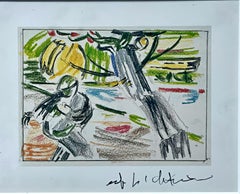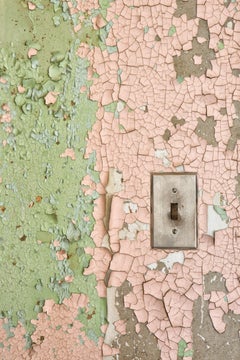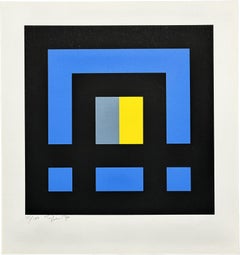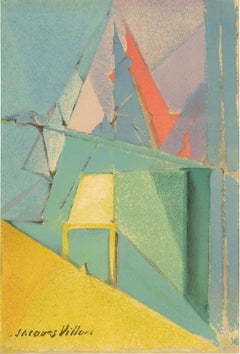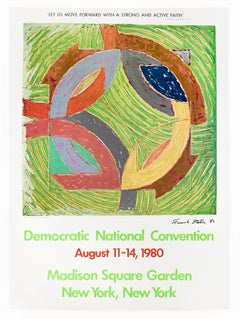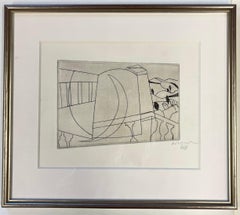Continental US - Abstract Prints
1980s Pop Art Continental US - Abstract Prints
Lithograph, Offset
2010s Contemporary Continental US - Abstract Prints
Metal
1970s Abstract Geometric Continental US - Abstract Prints
Screen
Mid-20th Century Modern Continental US - Abstract Prints
Lithograph, Handmade Paper
1980s Pop Art Continental US - Abstract Prints
Lithograph
1960s Continental US - Abstract Prints
Etching
1970s Op Art Continental US - Abstract Prints
Screen
Late 20th Century Abstract Continental US - Abstract Prints
Lithograph
1930s Cubist Continental US - Abstract Prints
Etching
1970s Abstract Geometric Continental US - Abstract Prints
Screen
1970s Abstract Continental US - Abstract Prints
Monotype
1980s Abstract Expressionist Continental US - Abstract Prints
Lithograph
2010s Abstract Continental US - Abstract Prints
Color, Linocut, Woodcut
2010s Abstract Continental US - Abstract Prints
Digital, Giclée
1950s Modern Continental US - Abstract Prints
Lithograph
1960s Minimalist Continental US - Abstract Prints
Screen
1970s Abstract Continental US - Abstract Prints
Etching, Aquatint
1970s Abstract Expressionist Continental US - Abstract Prints
Screen
1990s Abstract Expressionist Continental US - Abstract Prints
Lithograph
1960s Modern Continental US - Abstract Prints
Lithograph
1970s Abstract Geometric Continental US - Abstract Prints
Screen
21st Century and Contemporary Pop Art Continental US - Abstract Prints
Canvas, Giclée
1970s Op Art Continental US - Abstract Prints
Screen
2010s Pop Art Continental US - Abstract Prints
Wood, Mixed Media, Permanent Marker, Screen
1970s Abstract Geometric Continental US - Abstract Prints
Paper, Screen
Late 20th Century Abstract Continental US - Abstract Prints
Lithograph
1970s Abstract Continental US - Abstract Prints
Etching, Aquatint
2010s Contemporary Continental US - Abstract Prints
Lithograph
1990s Contemporary Continental US - Abstract Prints
Lithograph
Early 2000s Realist Continental US - Abstract Prints
Metal
Mid-20th Century Abstract Geometric Continental US - Abstract Prints
Lithograph
1990s Abstract Geometric Continental US - Abstract Prints
Screen
1970s Surrealist Continental US - Abstract Prints
Lithograph
1990s Contemporary Continental US - Abstract Prints
Lithograph
1970s Abstract Geometric Continental US - Abstract Prints
Screen
1960s Abstract Expressionist Continental US - Abstract Prints
Lithograph
Mid-20th Century Abstract Expressionist Continental US - Abstract Prints
Lithograph
1970s Abstract Continental US - Abstract Prints
Etching
1970s Minimalist Continental US - Abstract Prints
Screen
1970s Op Art Continental US - Abstract Prints
Screen
1970s Modern Continental US - Abstract Prints
Lithograph
Mid-20th Century Abstract Continental US - Abstract Prints
Lithograph
1990s Pop Art Continental US - Abstract Prints
Offset
Early 2000s Minimalist Continental US - Abstract Prints
Lithograph
1970s Surrealist Continental US - Abstract Prints
Lithograph
1980s Pop Art Continental US - Abstract Prints
Lithograph, Offset
1960s Modern Continental US - Abstract Prints
Lithograph, Offset
1980s Abstract Expressionist Continental US - Abstract Prints
Lithograph
1960s Abstract Expressionist Continental US - Abstract Prints
Etching
1980s Pop Art Continental US - Abstract Prints
Paper, Screen
1990s Abstract Expressionist Continental US - Abstract Prints
Etching, Aquatint, Intaglio, Handmade Paper
Early 2000s Post-Impressionist Continental US - Abstract Prints
Archival Paper, Screen
1980s Abstract Expressionist Continental US - Abstract Prints
Lithograph, Offset
1950s Fauvist Continental US - Abstract Prints
Lithograph
1970s Abstract Expressionist Continental US - Abstract Prints
Lithograph, Offset
21st Century and Contemporary Contemporary Continental US - Abstract Prints
Archival Paper, Photographic Paper, Giclée, Archival Pigment, Plexiglass
2010s Contemporary Continental US - Abstract Prints
Digital, Giclée
1980s Abstract Expressionist Continental US - Abstract Prints
Screen
1980s Street Art Continental US - Abstract Prints
Lithograph
1990s Contemporary Continental US - Abstract Prints
Etching
Read More
Joan Mitchell’s Rare, Late-Career Diptych Buzzes with Life
Beneath the inky blackness, the painter’s irrepressible energy electrifies this pair of intaglio prints.
The 1stDibs Guide to Types of Abstract Art
Get to know the key movements and artists who have influenced visual culture for more than a century.
Get to Know the Artists Who Led the Op Art Movement
In the 1960s and '70s, the hypnotic creations of Op artists went mainstream and influenced the look of pop culture.
